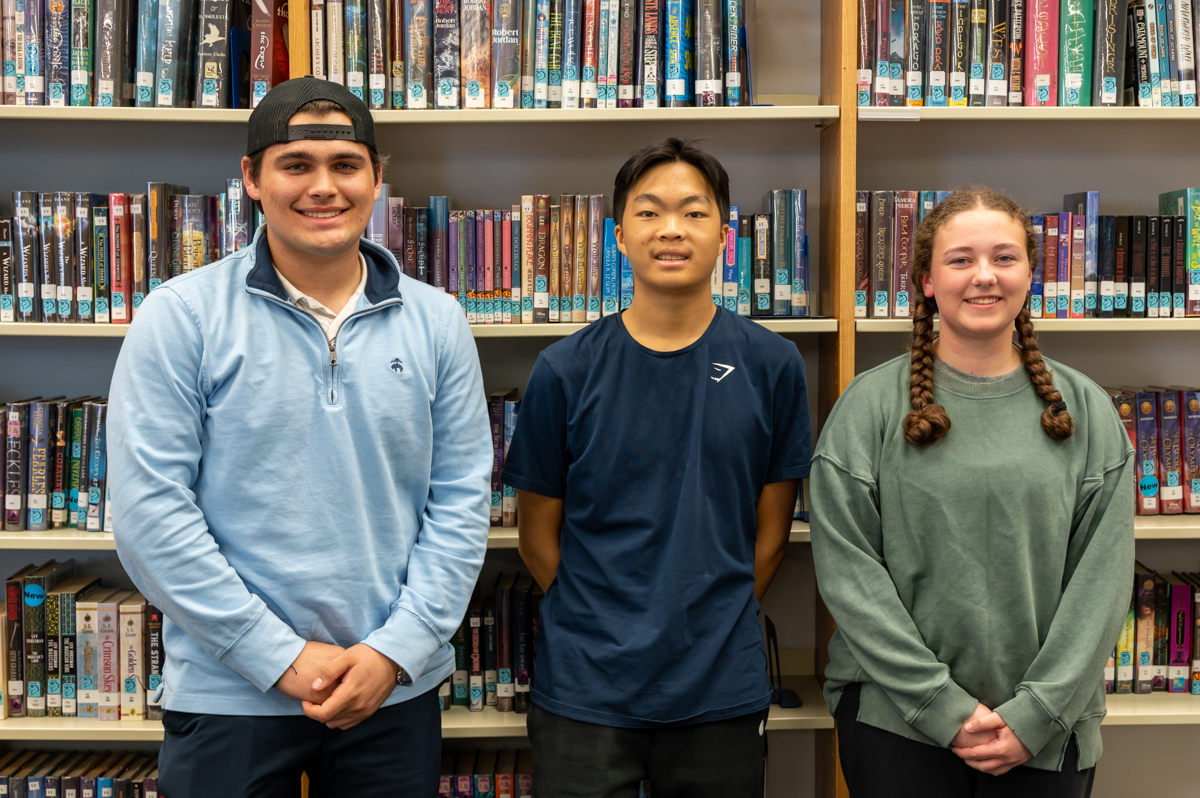
 press-releases
press-releases 

Thanks to financial support from the community, Mattituck High School juniors were able to embark on an educational field trip to the National 9/11 Memorial & Museum in Manhattan.
The memorial is known for the reflecting pools that mark where the Twin Towers stood, while the 110,000-square-foot museum showcases the history of the attacks “through artifacts, imagery, personal stories and interactive technology,” according to its website. For the students who took part in the trip, the museum offered insights into what for them is an historical event, but one that persists as an indelible memory for most Americans.
The students often know precisely where their parents were on that fateful Tuesday morning. Tim DePaulis’ father raced after work to get home and be with his older siblings. Rocco Horton’s father, a Cutchogue firefighter, headed west along with other local first responders who aided rescue efforts and helped a wounded city recover.
“I’ve never really understood and saw how it really impacted everyone in the community,” Tim said after the trip. “Not even just in the city, but on Long Island and nationwide.”
“I heard all the stories from people that were there,” Bridget Mulrain of Mattituck said. “But [the trip] made me feel like I understand more of what happened and how it affected everyone that was there at the towers. It just made me feel more understanding of it.”
The seeds for the trip were planted at Ammirati’s on Love Lane on Sept. 11 last year. Although deli owner Greg Ammirati and many of his colleagues and customers, many of whom are first responders, well remember the events of 2001, he realized one of his younger employees was born years after the attacks unfolded. That realization inspired him to help Mattituck’s youth better understand what the nation and the world endured on a day that claimed the lives of nearly 3,000 Americans, including hundreds of first responders and others who continue to die from various 9/11-related illnesses.
Mr. Ammirati galvanized the community, raising several thousand dollars to load the Mattituck juniors onto two Hampton Jitneys, send them to the museum, and bring them home. Edward Sidor, a senior design director at the museum who graduated Mattituck High School in 1980, led the students on a guided tour.
“The PBA, along with the Lions Club and Greg [Ammirati] and some other local businesses funded the trip,” Mattituck school superintendent Shawn Petreti said. “And the fact that Ed Sidor, who has been involved in the museum since the day of the attacks — the aftermath, the clean up, the planning and designing of the memorial — was there to speak with students and arrange a first class tour for our kids, it really made it a special day.”
Students do learn about the events of Sept. 11 in the classroom. Kevin Chartrand, the high school’s 11th grade U.S. history teacher, said he discusses the attacks with his students every year on the anniversary as well as later in the year when he tries to squeeze the modern era into the final few weeks of instruction.
“You have to really explain the role of the United States in the world, Islamic fundamentalists, why they would attack the United States and why [they attacked] the Twin Towers.” Mr. Chartrand said. “It’s kind of explained to the kids that the [World Trade Center] was kind of a representation, a symbol of the American economy … They’ve grown up in a post-9/11 world. Most of us before that knew a very different world, different security measures that are in place right now, Department of Homeland Security, the watch for terrorists and terrorist activity, something that we never really grew up with, but that we’re really concerned with now in the post-9/11 world.”
While the classroom experience is informative, it cannot compare to what the students experienced at the museum itself. The teenagers got a clearer grasp of the sheer devastation the attacks caused and the torrent of shattered glass and toxic debris that rained down on the city and the region. The students were also taken aback by the audio recordings of victims’ final messages to their loved ones and recordings first responders’ communications on site.
“Hearing [NYFD] Company 3, hearing their last radio transmissions, it’s different than just learning about it,” Rocco said. “I’m in the [Cutchogue] fire department as well — hearing them transmit those, it’s scary.”
Rocco said “the last column” — a three-and-a-half-story beam that was the final piece of debris removed from Ground Zero on May 30, 2002 — stuck out as his most memorable exhibit piece. The museum was built around the beam, which became a powerful symbol of remembrance during the cleanup after a firefighter spray painted it to mark where he saw signs of his fallen colleagues. Other first responders, recovery workers and victims’ loved ones soon adorned the column with “patriotic messages, signatures, union stickers, agency patches, photographs, memorial and prayer cards and flowers,” the museum’s website said.
Since returning from from the trip, Mr. Ammirati said he’s heard from more than a dozen students and parents who said the outing was a success.
“It feels awesome,” he said of spearheading the initiative. “I spoke to one of the [Southold] cops [who went on the trip], they want to try and get Southold and Greenport [schools] to go next year. Hopefully that can happen. I said I’d help, and I’m sure the community out there will help. It’s a great thing to get behind.”
24World Media does not take any responsibility of the information you see on this page. The content this page contains is from independent third-party content provider. If you have any concerns regarding the content, please free to write us here: contact@24worldmedia.com